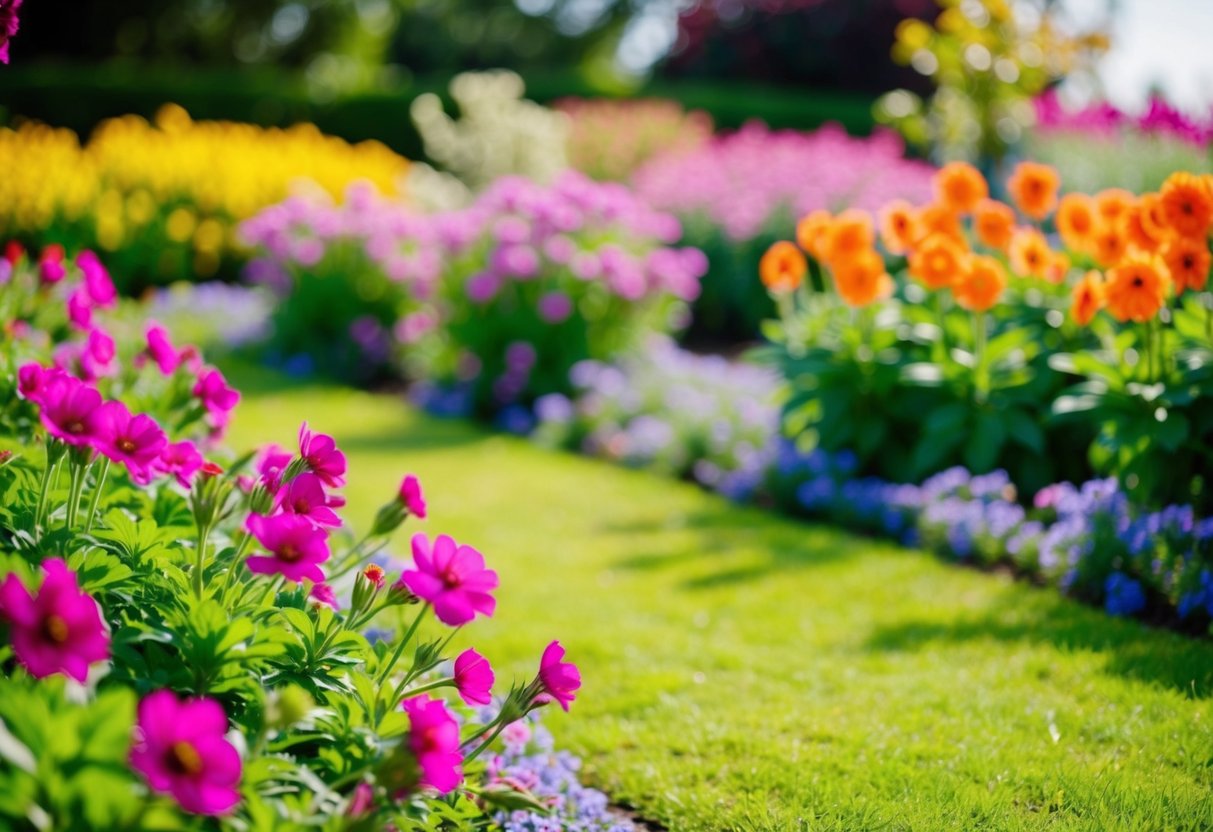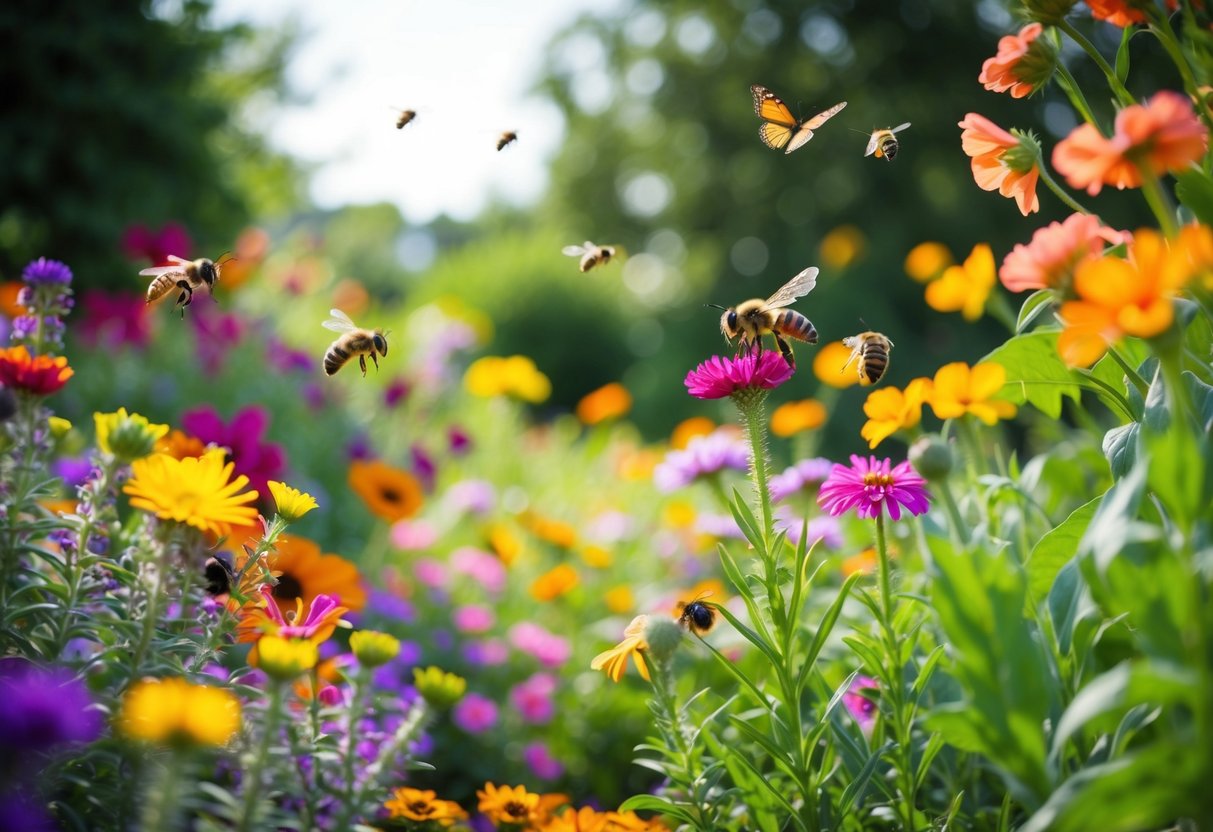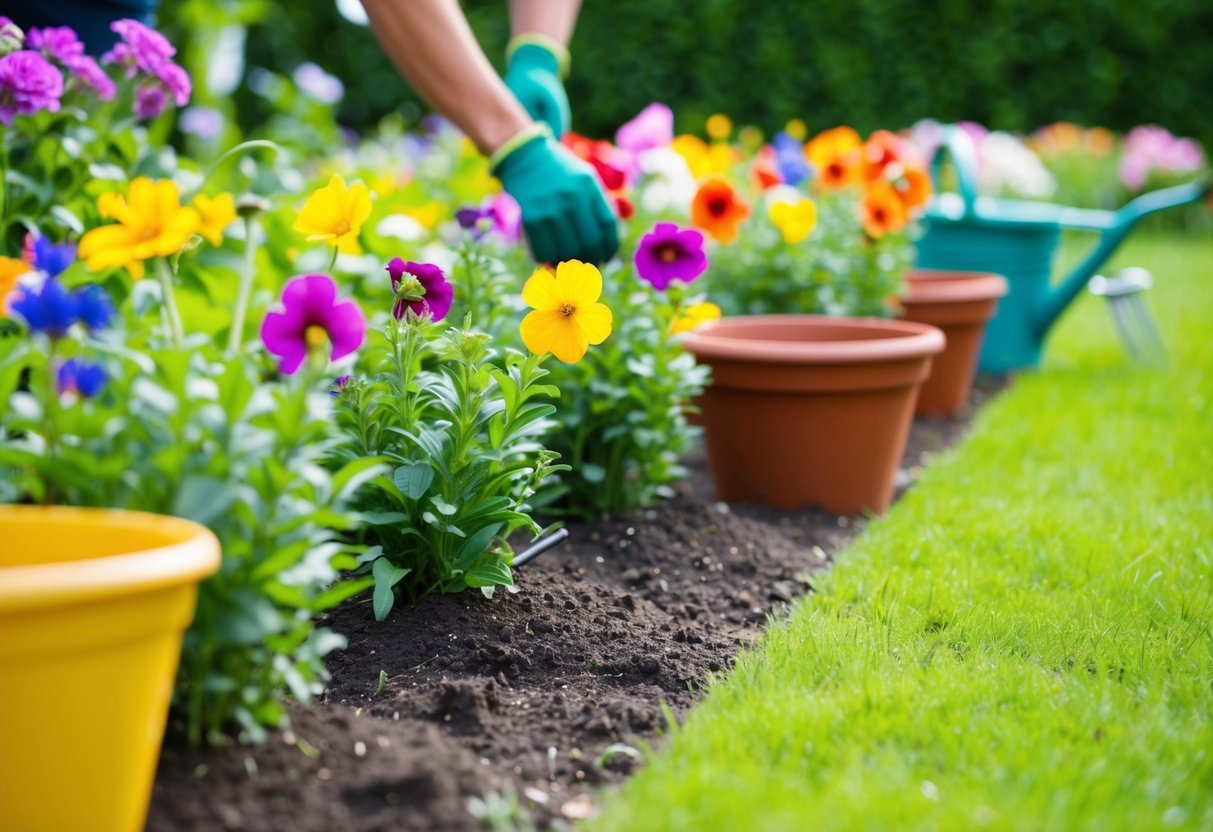Should I Plant Flowers Around My Garden? Discover the Benefits
Thinking about adding some flowers to your vegetable garden? It’s a great idea for many reasons. Planting flowers around your garden can not only enhance its beauty but also benefit your vegetables by deterring pests and attracting helpful insects. This means you’ll enjoy vibrant colors while also supporting a healthy garden ecosystem.

When planning your garden layout, consider the placement of flowers to maximize their benefits. For instance, marigolds are known for their ability to ward off pests with their strong scent. Placing them around the edges of your vegetable garden can create a natural barrier. Similarly, bee balm can attract pollinators, improving the yield of your crops.
Choosing the right flowers to integrate with your vegetables doesn’t have to be complicated. With options like nasturtiums, bee balm, and marigolds, you can create a beautiful and functional space. These flowers will support your veggies while adding a splash of color to your garden sanctuary.
Choosing the Right Flowers for Your Garden

Picking the right flowers for your garden can make all the difference in creating a vibrant and harmonious outdoor space. Consider the balance between plant types, bloom times, and color schemes to ensure an inviting atmosphere.
Annual vs. Perennial Flowers
Annual flowers bloom for just one season but provide lots of colors and variety. They need to be replanted every year, which allows you to change up your garden’s look. Marigolds and zinnias are popular choices since they bloom continuously throughout their short life cycle.
Perennial flowers come back year after year and can create the garden’s backbone. Although they might have a shorter bloom period, they reliably return. Choices like lavender and peonies add structure and consistency. When planning, think about mixing both types for variety and longevity, ensuring your garden remains lively all year long.
Importance of Bloom Time
Bloom time refers to when flowers are in full bloom. Planning around this is crucial so your garden maintains consistent interest throughout the growing season. By selecting a mix of early-blooming and late-blooming flowers, you can create a visually dynamic space.
For example, daffodils might bloom in early spring, while asters bloom in late summer to early fall. Understanding these timelines helps you design a garden that is always in color. Remember, staggered bloom times mean you’ll always have something new to enjoy.
Colorful Blooms for Aesthetic Appeal
Color choice can deeply impact the aesthetic appeal of your garden. Bright colors like red and orange can make spaces feel warm and energetic, while blues and purples can introduce calmness. Consider combining complementary colors for dramatic contrast, or create a monochromatic scheme for elegance.
Incorporate flowers like sunflowers for a splash of yellow or hydrangeas for soothing blues. Bold combinations or subtle tones can be achieved, depending on your personal taste and design goals. Don’t shy away from experimenting with different hues to discover what works best for your space.
By thinking about these elements, you can create a garden that meets both your practical needs and aesthetic desires.
The Benefits of Companion Planting

Companion planting can be a great choice for your garden. It offers a natural way to attract beneficial insects, deter pests, and improve soil health. These benefits help your garden thrive and produce more healthy plants.
Attracting Beneficial Insects
By planting certain flowers alongside your vegetables, you can attract beneficial insects to your garden. Flowers like marigolds, zinnias, and alyssum are known to draw helpful bugs. These insects, such as bees and butterflies, assist in pollinating your plants, boosting your garden’s productivity.
In addition to pollinators, other insects can help manage pests. Ladybugs and lacewings feed on aphids and other small bugs that may harm your plants. By encouraging these beneficial insects, you reduce the need for chemical pesticides. This makes your garden more eco-friendly and keeps your vegetables healthier.
Repelling Garden Pests
Certain flowers and herbs can help repel unwanted garden pests naturally. For example, marigolds secrete a scent that deters nematodes, small worms that damage plant roots. This can help protect your vegetables from being eaten or spoiled by pests.
Other plants like basil and dill can keep mosquitoes and flies away. These aromatic herbs create a less inviting environment for pests, making your garden a safer place for plants to grow. Integrating these into your garden plan means you won’t have to rely on harsh chemicals to keep invaders at bay.
Improving Soil Health
Companion planting not only helps with pests and insects but can also improve soil health. Plants such as clover and beans are good for the soil because they fix nitrogen. This process enriches the soil with nutrients, which are essential for plant growth.
Some flowers also help regulate soil conditions. For instance, sunflowers have deep roots that break up compact soil, enhancing water flow and root penetration for other plants. This, in turn, leads to better plant growth and a more robust garden overall. By choosing the right plant combinations, you ensure your garden soil remains rich and fertile.
Specific Flowers and Their Roles

Planting flowers around your vegetable garden can enhance its productivity and beauty. Certain flowers serve specific roles that benefit both the garden and you—the gardener. These roles include pest deterrence and attracting pollinators.
Marigold and Nasturtium: Pest Deterrents
Marigolds and nasturtiums are excellent choices for keeping pests away from your garden. Marigolds release a distinct scent that repels nematodes and many garden pests. Their presence can create a protective barrier around your vegetables. You can tuck them between rows or near plants like tomatoes.
Nasturtiums are known for their peppery leaves and flowers. They attract aphids away from more valuable crops, serving as a trap plant. Plant them around cucumber or cabbage to keep those crops safe. Both marigolds and nasturtiums are easy to grow and bring vibrant color to your garden. Consider incorporating these in strategic spots around your planting beds.
Sunflowers and Lavender: Pollinator Attractors
Sunflowers and lavender are fantastic for inviting pollinators into your garden. Sunflowers have bright, large blooms that are easy for bees and butterflies to spot. They encourage these important insects to visit and pollinate other plants nearby. Plant sunflowers along the edge of your garden for both beauty and function.
Lavender is beloved by bees and can be planted alongside vegetables to improve pollination. Its pleasant scent and purple flowers attract a variety of pollinators. Lavender also works well in garden borders. Integrating these flowers can enhance flowering and fruiting by ensuring a steady flow of pollinators to your vegetables.
Herbs and Edible Flowers: Multipurpose Plants
Herbs and edible flowers can play several roles in your garden. Flowers like borage and calendula are notable for their use in the kitchen, as well as their garden benefits. Borage attracts bees and can improve the health of nearby plants. Its star-shaped blue flowers are also edible and can add beauty to salads.
Calendula, sometimes called pot marigold, has bright yellow blooms that can be used to make teas or as a garnish. Edible flowers and practical herbs provide culinary uses and display an array of colors. By using these multipurpose plants, you can create a garden that is both productive and enjoyable.
Encouraging a Healthy Ecosystem

Planting flowers around your garden helps create a healthy ecosystem by attracting beneficial insects and pollinators. These flowers support biodiversity and can also draw in predatory insects that keep pests in check.
Biodiversity in the Garden
Having a diverse range of plant species in your garden makes it a lively and healthier place. When you plant flowers, you invite a host of pollinators like bees and butterflies. Lavender, for instance, is known for attracting pollinators and repelling harmful insects. This can lead to better pollination for your vegetables and other plants.
Increased biodiversity also fosters a rich soil ecosystem. Different plant roots support a variety of soil organisms, which helps improve soil health. You can also incorporate practices like crop rotation to maintain this diversity. This involves changing the types of plants you grow in specific areas each year, helping to prevent soil depletion and pest buildup.
Flowers that Attract Predatory Insects
Certain flowers play a role in natural pest control by attracting insects that prey on garden pests. Planting marigolds is a good idea, as they bring in beneficial insects like ladybugs and lacewings. These insects feed on aphids, mites, and other pesky critters that might harm your plants.
Physical structures like log piles can also create a habitat for predators like toads and beneficial snakes. These creatures thrive in a varied environment, reducing the need for chemical pest controls. Adding flowers that support these predators helps keep your garden balanced and thriving.
Practical Tips for Planting and Maintenance

When planting flowers in your garden, it’s important to consider how to make the most of sunlight and water. You’ll also want to address soil erosion and know the best times for planting. These tips will help you grow healthy and vibrant flowers throughout the season.
Maximizing Sunlight and Water Resources
Choosing the right location for your flower garden is key. Look for a spot that gets plenty of sunlight, as most flowers need around 6-8 hours a day. If your garden has areas with less light, pick shade-tolerant plants. Use a simple chart to track how sunlight moves through your garden.
Water is just as crucial. Test your soil to see how well it drains. If water pools, consider adding organic matter to improve drainage. Water early in the morning or late in the evening to reduce evaporation. Drip irrigation systems can help you make efficient use of water while delivering it directly to the plants.
Dealing with Soil Erosion
Soil erosion can damage your garden by removing essential nutrients. Plant ground cover flowers or grasses to help hold the soil in place. These plants also add beauty and require little maintenance.
You can also use mulch to prevent soil erosion. Spread a 2-3 inch layer around your plants to keep the soil from washing away during rain. Another option is to build raised beds. They protect the soil and offer better drainage.
Timing for Planting Flowers
When it comes to planting flowers, timing matters. Most flowers are best planted after the last frost of spring. This gives them a chance to establish roots before the heat of summer arrives. Always check your local frost dates, as these can vary widely.
Some flowers, like pansies and violas, thrive in cooler weather. Plant them in fall or early spring for best results. For continuous blooms, stagger your planting times. This method ensures you always have flowers in bloom throughout the growing season.







